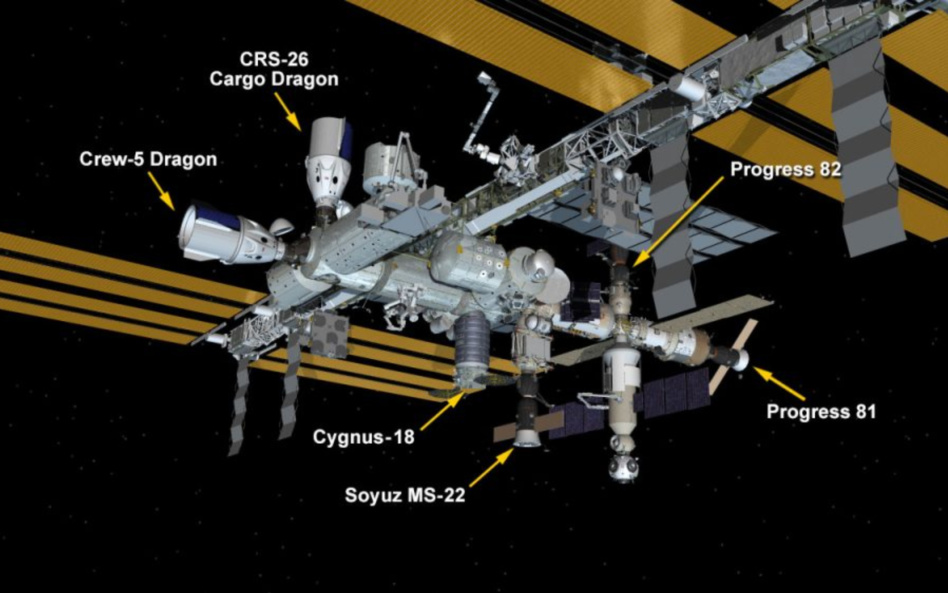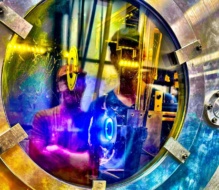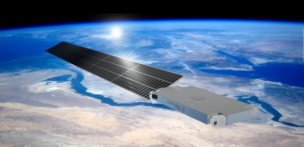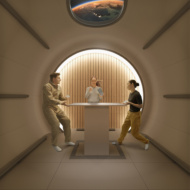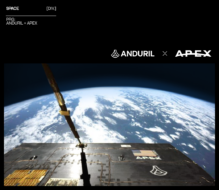SpaceX launched its 26th ISS resupply mission on Saturday, hoisting roughly 7,700 pounds of hardware, food, cubesats, and scientific experiments to the station. NASA and SpaceX scrubbed a liftoff earlier in the week due to uncooperative weather.
For the CRS-26 mission, SpaceX used a brand-new Falcon 9 booster (tail number B1076) and Cargo Dragon capsule. The new first-stage booster rendezvoused with SpaceX’s “Just Read the Instructions” droneship at ~T+07:42, roughly 200 miles downrange of the Space Coast.
The mission’s Dragon spent some 17 hours en route from Kennedy Space Center to the ISS, which soft-captured the capsule shortly before 8am ET on Sunday morning, 227 miles over the Pacific Ocean.
On the manifest
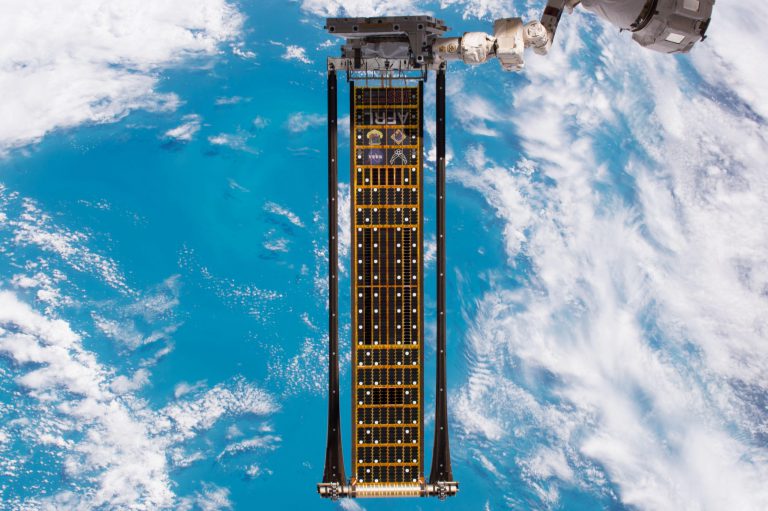
Named iROSA, the new roll-out solar arrays are designed to augment the aging ISS’s power generation capabilities. Weighing ~1,196 kg, the iROSA wings were the heaviest payload of the CRS-26 mission.
Power boost: Contracted by Boeing and manufactured by Redwire, the iROSA wings represent the third and fourth to be delivered to the station. Astronauts will install them on the ISS’s exterior during spacewalks tentatively set for Tuesday, Nov. 29, and Saturday, Dec. 3.
Once all six iROSA wings are installed, they are expected to increase the ISS’s power generation capability by 20%–30%, from 160 kilowatts to up to 215 kilowatts.
What else was Dragon carrying?
- 1,062 kg of crew supplies, including spicy green beans, pumpkin pie, and other Thanksgiving treats (better late than never!)
- 937 kg of science investigations, including an experiment to grow dwarf tomatoes in microgravity and an on-orbit medical diagnostics kit
- 296 kg of spacecraft hardware
- 25 kg of spacewalk gear
- 12 kg of IT equipment
+ What’s next? The Dragon will spend 45 days at the station. The next Dragon headed to the ISS is the crewed variant that will launch the NASA/SpaceX Crew-6 mission (expected in mid-February).
Say Hello to SPORT
NASA and the Brazilian Space Agency (AEB) launched their first jointly operated satellite on the CRS-26 mission. The cubesat, which will deploy from the ISS, is set to track space weather in the ionosphere (50–600 miles above Earth).
The 6U satellite will study plasma bubbles that form high in the ionosphere over the equator. These plasma blobs often form over the tropics at nightime, scattering radio and GPS signals. The phenomenon, known as scintillation, can produce noisy radio signals or disrupt them entirely, per NASA.
Brazil built the satellite, which is the size of two loaves of bread, while NASA and partner organizations kicked in many of its sensors. SPORT is…sporting…radars, sensors, and scintillation monitors that will conduct measurements throughout the ionosphere.
- Ion Velocity Meter, provided by UT Dallas
- A GPS radio occultation (RO) sensor, supplied by the Aerospace Corp
- Electric Field Probe, or EFP, provided by Utah State University
- Langmuir Probe, also provided by Utah State University
- Swept Impedance Probe (SIP)…also provided by Utah State University
- Finally, a fluxgate magnetometer, supplied by NASA Goddard.
Two Brazilian research outfits—the National Institute for Space Research (INPE) and the Technical Aeronautics Institute (ITA)—are contributing to the heliophysics mission.
The story behind the name: With Brazil in the World Cup, we couldn’t help but comment on the “SPORT” name. NASA’s Jim Spann, who grew up in Recife, Brazil, was responsible for naming the satellite. He’s the space weather lead at the US space agency’s heliophysics division and an ardent soccer football fan. SPORT is named after Sport Club do Recife, Spann’s “soccer team is heart.”
Checking in with AEB…what else is on the horizon?
Payload caught up with AEB President Carlos Moura via email recently to discuss SPORT, the Alcântara Spaceport, and national space priorities in 2023. The following interview was lightly edited for clarity and length.
How has this mission contributed to Brazil’s domestic satellite efforts?
SPORT is the first joint Brazil-US satellite. Among the partners is NASA, which is undoubtedly an outstanding player in science and space. So, that joint effort opens new windows in our space perspective. Moreover, the nanosatellite itself is highly intense technology.
With our partners, we do believe it will enhance our understanding of the phenomena that affect the northeast and some other parts of four national terrestrial and maritime areas of interest. Thus, the SPORT Project helped us to learn more about big science with smallsats, and we are already working on new projects that will benefit from that experience.
What Brazil space priorities are you most looking forward to in 2023?
The Alcantara spaceport will have its maiden private launch in December 2022. Next year, we should have other private launches, definitely putting Brazil in the global space transportation arena.
In February, we should also launch our first private satellite: VCUB1. It’s the same size as SPORT, and it’s also a high-tech nanosat, with some indigenous solutions being tested in a real space environment. We expect it will open new opportunities, both in terms of equipment and services.
Some other academic and scientific nanosats are in the pipeline: Aldebaran-1, Nanomirax, and the first components of the Catarina Constellation. The year 2023 will certainly represent a new chapter in our space program, along with some other challenging projects to be led by the private sector, sponsored by the National Fund for Science and Technology Development (FNDCT), with the support of the Science, Technology and Innovations Ministry and the Brazilian Space Agency.
Any further updates on Alcantara?
The South Korean company Innospace should conduct the HANBIT-TLV first flight test in December, in a joint operation with the Brazilian Air Force (FAB). C-6, a Canadian company, should be next in 2023. Other foreign companies are discussing launch services support contracts with FAB.
The federal government is leading a comprehensive program to support the holistic development of Alcantara, considering logistics, education, and other demands and opportunities. We are engaged with the local government levels and the private sector to consistently apply the best of our knowledge and drive positive spillovers for the surrounding region.
Why does Brazil’s experience in EO and ground operations make you the right operator for these types of missions?
The surveillance of our vast territory requires EO applications, among many other demands. We have developed capabilities in that domain, and our ground infrastructure has decades of meaningful services provided to the country and to the global community.
Now, we are spreading the capabilities to other organizations beyond the government, like universities, R&D institutes, and the private sector. The “new space” drivers allow new entrants to look for a place in that market, not only for science and technology development, but also national solutions for our economy, public policies, and new demands of a highly interconnected society.
How in the world did you manage to line up the launch of a satellite named SPORT with the World Cup?
What a nice coincidence! Space is hard and it is also fun. We are grateful to Dr. Jim Spann for giving that name to the nanosat. It’s a meaningful link with football, a Brazilian passion. From the outreach we have already done in Recife and the embrace of the SPORT football club, we’ve seen that it really helps to use sports and scientific curiosity to gain the general public’s attention. That’s especially important for the youth, so we can get them inspired about the space program–-and get more young professionals to go into the field.
